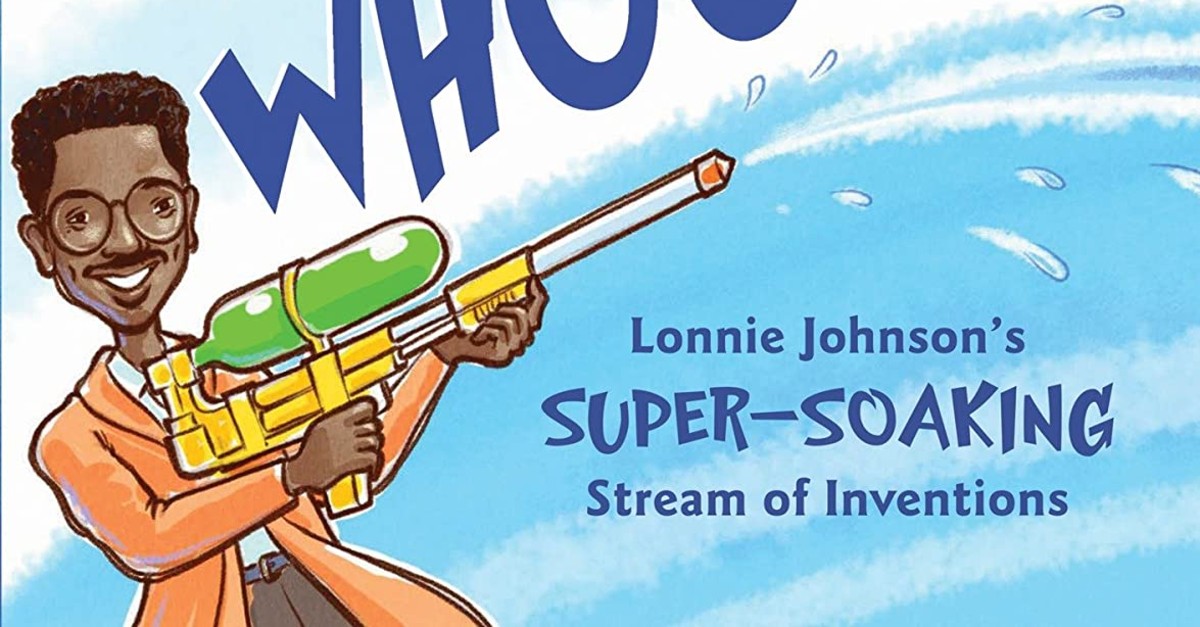One fun aspect of working in education is that you’re always learning new things. For example, a few weeks ago I was assembling an engineering project when I stumbled across a book about Lonnie Johnson. Johnson is an African American engineer who grew up fascinated by rockets. He loved building and creating but was discouraged from becoming an engineer. Nevertheless, he persisted, and after graduating college went on to work for NASA.
Johnson had many successful years at NASA, but his greatest accomplishment can probably be found in your own home: The Super Soaker! While developing a new cooling unit for refrigerators and air conditioners, Johnson created a prototype water gun which would eventually become the world-recognized Super Soaker. It’s one of the best-selling toys in history and has brought wonder to countless generations. Even today, the water gun is a staple of summertime play!
Learning by Example
As an educator, I can’t help but be inspired by the story of Lonnie Johnson. Every day we work with students who have the potential to create positive change in our world. Who knows what they’ll go on to become? It could be the next great author, scientist, or engineer is sitting in your very classroom. Yet, it’s important to remember that student potential only thrives when someone is there to encourage it.
Just imagine how our world would be diminished if Lonnie Johnson had listened to his detractors. Our understanding of space, not to mention our summer vacations, would be a whole lot different without his discoveries. Students deal with uncertainty and discouragement on a daily basis, and regrettably, it’s all too easy for them to give up on a dream because someone told them to. While the year ahead is going to be filled with challenges, I think it’s worth taking a moment to reflect on some basic principles of teaching. Specifically, here are three reminders from the story of Lonnie Johnson.
It Starts with You
- Don’t Underestimate Your Students: Every student has the potential for greatness (yes, even THAT student.) The truth is that sometimes their talent simply manifests in ways we don’t recognize. That class clown who is always making people laugh? They might just be a natural public speaker. What about the student who never stops asking, “Why?”. Their curiosity would serve them well in a STEM-related field. Always be on the lookout for hidden talents.
- Think Outside the Box: Remember, Lonnie Johnson didn’t set out to invent the Super Soaker. He was actually trying to design a cooling system. When we allow students to experiment and follow their curiosity, we create opportunities to learn, discover, and grow. Linear learning has its place but give students time to tinker as well. You never know where their imagination will lead them.
- Redefine Greatness: When educators talk to students about success, we tend use a lot of common examples. Achievement is defined as, “Becoming a doctor/lawyer/politician.” Have you ever defined greatness as inventing an amazing toy that’s beloved by millions? Probably not. Show students there are more ways to be great than the conventional career paths. Why not invent a new board game? Design fun face masks, or even use STEM to write poetry!
Stay Curious
Lonnie Johnson began as a kid fascinated by rockets and went on to become an outstanding engineer. Every student in our classroom also carries that same potential. Be patient enough to uncover their hidden talents and channel them in the right direction. The future ultimately belongs to the students you teach. So, the next time you pick up a Super Soaker, let it remind you of what today’s kids can achieve!
We hope you are all staying healthy and safe during this difficult time. For more free educational resources, or ideas on how to promote healthy Social-Emotional Learning, simply follow this link!
*Today’s image is brought to you by, Whoosh!: Lonnie Johnson’s Super-Soaking Stream of Inventions. Get your copy today!

